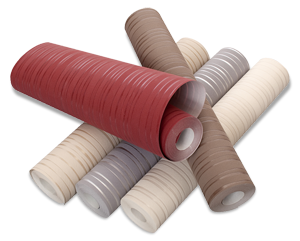Textured Walls: Should You Use Wallpaper, and What Kind?
 You’ve thought about giving your home’s interior a do-over. Economically, wallpaper gives the greatest impact. Yet, you’re dealing with some exposed brick and other textured surfaces, and you’re wondering if this is a good choice.
You’ve thought about giving your home’s interior a do-over. Economically, wallpaper gives the greatest impact. Yet, you’re dealing with some exposed brick and other textured surfaces, and you’re wondering if this is a good choice.
The fact is, many homeowners planning such a renovation project have to factor in old paneling, brick, and textured walls. So, what do you need to consider?
Modifications
Whether you or a professional like M. Brett Painting gets the job done, these surfaces can display wallpaper, as long as the following are completed prior to the installation process:
- Any nails and protruding objects must be removed and filled in with putty. This will give the wall more of an even surface.
- Any high points should be knocked down.
- Make sure the paneling is secure first, and if not, you might have to add a few extra nails.
- If you’re dealing with a slick or glossy surface, realize wallpaper won’t stick to it unless the coating is removed. Professionals often recommend going over it with trisodium phosphate first.
- Ceramic and tile are also options. However, first be ready to sand it down with 200 to 400 grit sandpaper, add a trisodium phosphate rinse, and go over it with a prep coat before you install bridging material.
The Wallpaper Type
Plenty of wallpaper varieties are out there. Yet, some prove to camouflage textured and uneven surfaces better than others.
- If the wall has a smooth surface to it, you’ll be able to add flat-finish or a shimmer effect material on top.
- If you’re dealing with a few imperfections, experts recommend embossed or expanded surface textured paper.
- If the area is high use, the textured material offers another advantage – it hides wear and tear and marks better.
When it comes to installation, many find that wallpaper removal and hanging are jobs left to the professionals. So, as you undergo this project, be sure to get our team involved. Contact our Connecticut location for more information.
